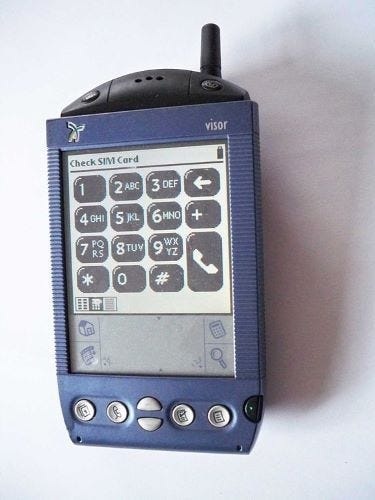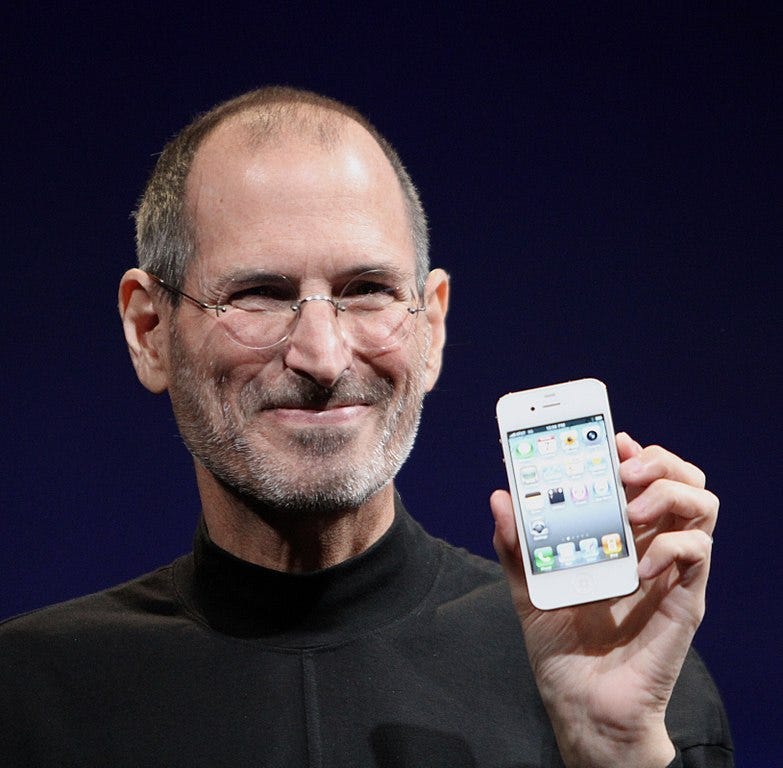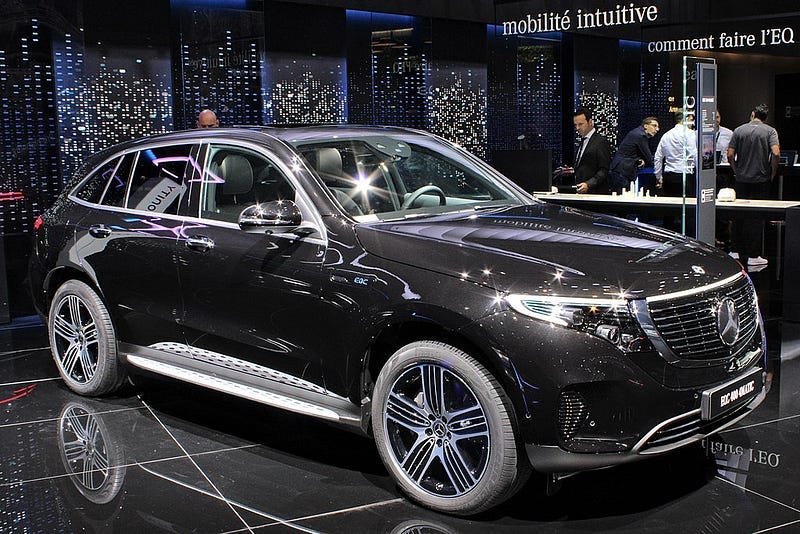Tesla is to Apple, as ________ is to Android
How the platform reigns supreme
For a long time, I considered myself to be an early adopter. Back in 2000 I bought a handspring PDA, which had licensed the Palm OS so they could make their own devices with a major upgrade — expansion modules. The key selling factor of the Handspring device was the ability to upgrade the device. Need more memory, just add a module, want a digital camera, add a module, want a GPS unit, add a module or if you were really cutting edge like me you could add the OmniSky module which would turn your palm pilot into a cell phone. I remember back in those heady days of flip phones being made fun of for holding a Palm Pilot sized device up to my ear to take a call. These days I get my comeuppance as people consider it absolutely normal to hold ham sandwich sized cell phones up to their ears, my Handspring was svelte in comparison.
Clearly, Handspring was not destined to be the cell phone leader of the 21st century. As we all know when Steve Jobs stood up on stage in January of 2007, he changed the world with the launch of the iPhone. What’s amazing about all of this was the sheer momentum of change that Apple ushered into the market. At the time the first iPhone launched, all of the established players took swipes at dethroning the newly crowned cell phone champion. Now those once giants, Motorola, Sony, Nokia, Eriksson, Research in Motion, are all mere shadows of what they had once been in the mobile market. Apple steamrolled all competitors to come to dominate the cell phone scene.
Looking back on the evolution it’s clear that Apple’s success is not just from innovating on the device front but also for innovating in the distribution of apps, of music, and yes from the rabid love heaped on them by fanboys (and girls). When you look at it through the lens of brand appreciation, Apple fans absolutely love everything that Apple creates. That love for the brand overshadowed everything wrong with the company (e.g. iTunes) and gave Apple plenty of latitude to experiment and tweak their platform to perfection.
Most people would agree that Apple won the cell phone wars, but that’s certainly far from the truth. If you’re looking at it through the lens of sheer market size metrics, Android is the clear cell phone champion with a larger installed base that Apple. Sure, Android is a fragmented ecosystem with multiple forks making it a challenge for developers to develop for all devices, but over time Google persevered and managed to beat Apple with the long game and is now churning out devices that not only compete toe-to-toe but in some cases outperform Apple devices.
With history as our lens, one thing that’s apparent is that Google has been the only player to successfully compete with Apple on the basis of nothing more than a platform distribution strategy. As a device manufacturer Apple is a stronger brand with a growing base of fans willing to forgive problems as a version problem, something to be fixed when they upgrade next year. And in exchange Apple, dutifully releases dopamine fixes to the user base in the form of new services and products designed to be adopted solely because they’re “made by Apple”.
While Apple has seen astronomic growth based on this strategy of ever more expensive cell phone releases and a never ending cycle of upgrades for fanboys to drool over, the reality is that the cell phone innovation cycle has slowed and Google has materially caught up to Apple where fans might be willing to make a change. And this is the crux of the thesis here. Apple was a juggernaut in the cell phone space, pushing innovation and ease of use to millions and no one could compete. Consumers loved the upgrade cycle, they loved getting the new iPhone of the season even though it often looked the same as the last release.
It took Google open sourcing and uniting the market behind a common vision for what makes a cell phone smart, the OS, to mount a serious counterattack on Apple. Google took what people love about their phones: the software, and they standardized it for the industry so that consumers could buy into the Apple style upgrade cycle and compete effectively against Apple.
Skimming articles on the web today I ran into what I believe is history repeating itself. Notably this article on the Mercedes EQC failure in Germany. What’s interesting is that the EQC was billed as a Tesla killer, just like the FF91 from Faraday Future or the Audi e-tron. People keep betting against Tesla in the way detractors bet against Apple 10 years ago, yet Tesla keeps racking up the wins. The much maligned Cybertruck? 250,000 in pre-orders, sure they’re refundable but they’re bigger than pre-orders for other competing vehicles. Year long delays in production of the Model 3? The Tesla Model 3 was the top selling Small + Midsize vehicle in Jan-Nov of 2019. While Tesla might make investors uneasy (mixed earnings, CEO that’ll say anything), the fans love the brand, very much in the same way that fans love Apple. The jury is still out on whether they’ll continue their run as a dominant player but with every quarter that goes by, Tesla’s able to shrug off another competitor.
It makes me wonder if we’re reaching a cycle in the vehicle market where a personal vehicle is simply the equivalent of a cell phone. Will over the air software updates feed the dopamine cycle for buyers? As someone that’s been vehicle shopping recently, and someone who’s ridden in a Tesla, it’s clear that Tesla has a more modern approach to vehicle ownership. Now when I get into BMW, Lexus, Mercedes, GMC, or even the new Chevy Blazer, they all feel so dated and cheap. They’re operating from a world where faux wood paneling and lots of buttons were the norm. They’re the equivalent of a Handspring Visor with all its bells and whistles competing for attention against the slickness and simplicity of the iPhone.
From a feature perspective there’s not much new in the way of features in vehicles just the level of spec that’s available. What sells a Samsung phone vs. an HTC is phone is first and foremost the design, followed by trade offs in features 8MP vs. 12MP camera, 6” screen vs. 5.5” screen. Sure, there’s gimmicks to entice new buyers (folding phones anyone?) but for the most part it’s a question of how premium of an experience do you want. The same can be said of cars, and from this consumers POV, I’d rather something excessively simple and intuitive (e.g. Tesla/Apple) or something standardized across platforms (e.g. Android). Don’t make it harder for me to buy your car because I must learn a new operating system, I don’t need to know how to work your fancy nav dial (looking at you BMW) or Remote Touch mouse (Lexus). And clearly Android Auto and Apple CarPlay are band aids on the situation.
With the recent failure of the Mercedes EQC it seems to me that if the luxury brands want to effectively compete against Tesla they need to take a page from Google’s platform strategy book and to move to a common platform in the same way consumer electronics manufacturers moved to Android. Do I have any faith they’ll manage this — not at all. Unlike the mobile industry where the battlefronts have been between innovative software driven 21st century companies the fight between the car giants and Tesla feels more one sided to Tesla’s advantage. I for one am curious to look back 10 years from now and see if we have a new landscape of vehicle brands? Will new Tesla vehicle launches dominate the market as they do today? Will several manufacturers team up to mount their own “Android” initiative? Or will it all be moot as Waymo & Uber will own all the vehicles on the road. I can’t say that I know what will happen, but in an older, more wizened form I’m going to eschew early adopter status on this one and gamble less with my money than I did when I bought that Handspring Visor many years ago; so I’ll probably line up with the rest of the sheep to get a new Tesla. And you know what… I’ll probably love it.






